- Home
- David Leavitt
Florence Page 2
Florence Read online
Page 2
According to Italians, Tuscans speak the purest Italian, if not the most beautiful. (The ideal is ‘una lingua Toscana in una bocca Romana’ – a Tuscan tongue in a Roman mouth.) This may be why the city also abounds in language schools, most of them named after great Renaissance figures such as Dante and Michelangelo. Mark and I studied Italian at the British Institute, which Acton founded in the nineteen thirties with his friend the biographer Joan Haslip. Here most of our fellow students were English, many of them teenagers on their way to Oxford or Cambridge. One of the girls, whose parents had a house in Chianti, complained that when she tried to speak Italian to ‘the peasants’, she could not understand their replies ‘because they haven’t got any teeth’. What she might actually have been hearing was the famous aspirated ‘C’ of Florence, which turns the word casa (house), for example, into ‘hasa’. A drollery in the rest of Italy is to go up to a Florentine in a bar and ask him to order ‘a Coca-Cola with a short straw’. (Una Hoha-Hola hon un hannuccia horta.)
As the saying goes, however, the best place to learn a language is in bed, and so most of the American women we know in Florence speak flawless Tuscan Italian, right down to the aspirated ‘C’. Many live in rambling apartments, or farmhouses high in the hills, twenty minutes outside of town – a far cry from the pensions where they sojourned in student days. These pensions still thrive, though, and every year, more students arrive, tides of them, some of whom end up staying for the rest of their lives. They lend the city an atmosphere not unlike that of an American university town. Because of them, perhaps, pizza is immensely popular here, though as a dish the pizza has its origins in Naples. One afternoon at Yellow Bar, an immense pizzeria on Via del Proconsolo, we ended up sharing a table with an American woman in her forties and a Roman man in his seventies. It turned out that she was the design director for Ferragamo and that he had opened the first-ever pizzeria in Florence, some twenty-five years earlier. Such a grouping is fairly easy to fall into here, and if I report it with some surprise, it is only because it took place not at the chic Trattoria delle Belle Donne, or at Cibreo, but at Yellow Bar with its Buffalo Bill posters, its menu in English, and its crew of touts sent out into the center every afternoon to hand out flyers: in short, at the very sort of ‘tourist’ restaurant that as a student visiting Florence in the early nineteen eighties I would have avoided like the plague. Yet it was also at Yellow Bar that we once saw Franz Brüggen, conductor of the Orchestra of the Eighteenth Century, having a pizza after a concert at the Teatro della Pergola; at Yellow Bar that we have often seen the earthily handsome Romeo brothers, owners of an office-supply shop on Via della Condotta, whose penetrating eyes have provoked more than one art historian to spend twenty minutes choosing a pencil; at Yellow Bar, finally, that we sometimes see – still handsome after all these years, with thick, graying hair – the actor who played the carriage driver in the Merchant-Ivory film of A Room with a View, the one who sends Lucy into the violets to be kissed by George Emerson. Phaethon – as Forster called this driver – now runs a souvenir shop at the top of Via del Proconsolo. He is a regular at Yellow Bar, usually sitting at a corner booth, and often accompanied by a beautiful Japanese woman who may or may not have come to Italy to seduce him, after seeing her destiny spelled out one winter afternoon on the screen of an Osaka cinema, into which she had run to escape the rain … No, probably not. And yet something about Florence encourages one to the most sentimental speculation and fantasy.
In no sense of the word is Florence a ‘big’ city, and this has always been part of its appeal. In Rome you depend on buses, in Paris the Métro and taxis. In Florence, on the other hand, you can get pretty much anywhere you need to on foot, even the countryside, which opens out just beyond the Belvedere, at the top of Costa San Giorgio. Or perhaps I should say, you can get everywhere you need to on foot if you begin your trek within the limits of what Henry James called ‘the compact and belted mass of which the Piazza della Signoria [is] the immemorial centre’. Writing in 1873, James was already lamenting the ‘expansion’ of this mass, ‘under the treatment of enterprising syndics, into an ungirdled organism of the type, as they viciously say, of Chicago; one of those places of which, as their grace of a circumference is nowhere, the dignity of a centre can no longer be predicated’.
It would not please James to learn that a hundred and thirty years later, the expansion has only intensified, its most recent efflorescence being the construction of a tram to connect the city center with the suburb of Scandicci, where the novelist Ouida once lived, and which is now a glut of ugly apartment buildings. Such a tram the sophisticated tourist would be unlikely to take; as a rule he moves in more wholesome directions, out into Chianti, for example, or up to Fiesole or Settignano, where Michelangelo grew up. For the tourist, despite all his claims to want to see the ‘real Florence’, isn’t interested in its urban sprawl; he is interested in what Bernard Berenson called ‘conoscing’, the object of which is the discovery of unsuspected marvels. (The term derives from the Italian verb conoscere, ‘to know’.) He wants to bring home, if not photographic evidence, then at least the interior knowledge that he has partaken of all the marvels that Florence has to offer – as if that were possible in the course of a single human life.
And what marvels there are! Astonishingly, Florence houses almost a fifth of the world’s art treasures. A fifth! A thorough Florentine itinerary takes in architecture, sculpture and painting, major museums (The Bargello and the Uffizi) as well as small ones (the Stibbert and the Horne), public buildings, palaces and innumerable churches, Botticellis and Leonardos and Michelangelos and Giottos and Masaccios and Beato Angelicos and Gozzolis and Pontormos and Donatellos … And even if you see all of these things, even if you stay in Florence a year, or five years, there will still be something that you’ve missed, some remote church known only to the cognoscenti of conoscing, about which you will be informed only on the eve of your departure.
Nineteenth-century travelers, who usually visited Florence for a month or even several months, were able to take things at a slower pace, to intersperse their art wanderings with tea and shopping and social calls. (William Dean Howells’s 1886 novel Indian Summer describes just such a Florentine ‘season’.) When Clara Schumann came to Florence in 1880, her hostess, Lisl von Herzogenberg, wrote to Brahms that in order to appreciate the city fully, more time would be required ‘than her round-ticket – awful invention – permits her …’ And yet her reaction to what she did see suggests that Madame Schumann might have been grateful for the round-trip ticket.
It has happened a couple of times that we found her sitting on her stool before a Signorelli or a Verrocchio looking very worried, rubbing her hands in fearful enthusiasm – she would not let herself be emotionally carried away or allow her soul, so capable of vibration, to stir.
Soon, of course, the round-trip ticket would give way to even more awful inventions, such as the commercial airliner; as travel became easier, the length of the average visit to Florence would shrink, so that today the habit is to see the city in a few days or even a few hours. The result is an even more intense version of the sensory overload that Madame Schumann suffered. By 1989, Graziella Magherini, a psychiatrist working at the Santa Maria Nuova hospital, had observed so many cases of foreigners quite literally collapsing from too much art that she labelled the phenomenon ‘Stendhal’s Syndrome’, after an episode in the novelist’s diary in which he recalled suffering palpitations and a falling sensation during a visit to the basilica of Santa Croce in 1817. ‘J’étais déjà dans une sorte d’extase,’ Stendhal wrote, ‘par l’idée d’être à Florence, et le voisinage des grands hommes dont je venais de voir les tombeaux. Absorbé dans la contemplation de la beauté sublime, je la voyais de près, je la touchais pour ainsi dire. J’étais arrivé a ce point d’émotion où se rencontrent les sensations célestes données par les beaux-arts et les sentiments passionnés. En sortant de Santa Croce, j’avais un battement de coeur …; la vie était épuisée chez moi
, je marchais avec la crainte de tomber.’
It’s easy to understand how he felt. Especially for those of us inured to more banal provinces, the immanence of the old, the beautiful and the historic in almost every facet of quotidian life takes some getting used to. For example, when Mark and I first moved to Florence in the early nineteen nineties, we rented an apartment in a palazzo on Via dei Neri with a statue of Mercury in its foyer; a plaque posted on the façade of this building announced that here, in 1594, Ottavio Rinuccini – ‘letterato illustre e gentile poeta’ – had written La Dafne, a ‘pastoral fable’ that Jacopo Corsi and Jacopo Peri would soon transform into the world’s first opera. Under such circumstances, reality can start to seem like a guidebook, just as a terrace view that includes, among innumerable rooftops and green copper domes, the church of San Miniato al Monte, the Belvedere, and the hills of Chianti across the river, can start to seem like a postcard. It ceases to mean anything to you – or perhaps I should say that you cease to mean anything to it. Such views, we say, awe, they overwhelm … Every verb connected with Florentine views implies collapse, submission. There are moments, especially in the evening, when a walk through the Piazza della Signoria leaves me stunned; more often, however, when I walk through the piazza, I barely see the piazza, so focused am I on my own thoughts, or on the conversation I’m having, or on weaving a path among the many tour groups that crowd that part of the city in the spring, each moving with the singlemindedness of a school of fish, a flock of migrating birds, and led by a guide carrying a stick tied with a gaudy scarf to distinguish herself from all the other guides. On such occasions, I envy any newcomer his or her first glimpse of the piazza, especially if that glimpse takes place early in the morning, when the place is pretty much empty except for the pair of dozing carabiniere who, since the bombing at the Uffizi almost a decade ago, spend the night in their car by the Loggia dei Lanzi.
If the best time to look at the piazza is early, just after dawn, the best way to get there is from the river: you walk up the Lungarno Archibusieri, turn right, and suddenly, at the end of the long Uffizi corridor, opening like a pair of forceps, there it is: there you are. You stand, humbled, at the center of the world. The piazza looks you over. Like the Pensione Simi (where Forster first stayed in 1901), it has its permanent residents. Near the Palazzo Vecchio, Neptune soaks in a fountain that is as often as not turned off. The imitation David broods, eros dripping from his long fingers. Hercules hammers at the defeated Cacus. Few places in the world are so fraught with historical events. After all, in this piazza, Savonarola burned the vanities, and was burned himself. (A medallion embedded in the pavement marks the spot.) Cellini unveiled his bronze Perseus. Michelangelo’s David was erected, and then, a few hundred years later, moved to the Accademia, along a makeshift length of railroad track. Queen Victoria rode in a carriage through this piazza. Riots took place here, blood was spilled in quantity, and on the balcony of the Palazzo Vecchio, in 1938, Hitler shook Mussolini’s hand while Blackshirts chanted.
Today green algae coats Neptune’s calves. The algae is history’s athlete’s foot. The piazza is the shower room of the ages, where gods and heroes parade naked, display outsize genitals, boast of conquests, show off trophies. It is not a place for women. What women lurk among the statuary do so as wraiths of male hysteria or desire. Polyxena and the Sabines, being raped, calcify sexual bragging. Judith, grappling Holofernes to slice off his head, calcifies sexual terror. Like the advice of mothers, a row of Virtues shrinks to the shadows of the loggia, ignored. A herm, half human, half tree, is the piazza’s pin-up girl. Her black fig leaf pulls all attentions toward it like a vanishing point, her flight from lust inciting what it seeks to repel.
At night the impression is even stronger. Torches along the zippered edges of the Palazzo Vecchio lend a glowing radiance to the stones, as if light has made them molten. At this hour the sight of Neptune, the slick white wetness of him, is enough to set the mouth watering. Looking at him, you finally understand why sculptors fought over blocks of white Carrara marble. You want to take off your shoes, wade through the fountain, scrape at the green algae on his flanks with your nails.
Chapter Two
The promise of a destiny, verging on the erotic on one side and the artistic on the other, seems always to have attached itself to Florence in the imagination of the foreigner, drawing him to the city not merely so that he can see but so that he can be or become something more than he is. Or perhaps it would be more accurate to say that in Florence he hopes to retrieve a quality endemic to himself the expression of which the atmosphere of home has stifled. As Pater wrote of the great German art historian Johann Joachim Winckelmann, ‘In the fantastic plans of foreign travel continually passing through his mind … there seems always to be rather a wistful sense of something lost to be regained, than the desire of discovering anything new.’
My use of ‘he’ in the above paragraph, by the way, is deliberate: he is not meant, in this case, to mean ‘he or she’ (or ‘he and she’) since, historically, men and women seem to have come to Florence seeking different things, and when they have left (if they have left) to have taken different things away. Consider the Lawrences, David and Frieda, sojourning here just after the Great War. Describing the Piazza della Signoria in his 1922 novel Aaron’s Rod, Lawrence’s hero observes that it is ‘packed with men: but all, all men … but Men! Men! A town of men, in spite of everything.’ He offers a Whitmanesque hymn to the David, ‘white and stripped in the wet, white against the dark, warm-dark cliff of the building – and near, the heavy naked men of Bandinelli …’
As might be expected, Frieda had a different take on things; while concurring with her husband that Florence was ‘a men’s town’ (Mary McCarthy called it ‘a manly town’), she also complained that it struck her ‘as being like [Mrs Gaskell’s novel] “Cranford”, only it was a man’s “Cranford”. And the wickedness there seemed like old maids’ secret rejoicing in wickedness. Corruption is not interesting to me, nor does it frighten me. I find it dull.’
That dullness, which persists to this day, is the antonym of Paterian longing, and often leads to vitriol and complaint, particularly at those expatriate dinner parties at which no Italian accent is heard, and the topic of conversation is inevitably Italian inefficiency, Italian bureaucracy, Italian inflexibility … all of which, up to a point, is understandable, given that the negotiation of a culture as elaborate and tradition-bound as Italy’s can be frustrating, and one derives natural comfort from the commiseration of a countryman. And yet at these dinners there often comes a moment when I want to throw up my hands and say, ‘Well, if you hate it here so much, why don’t you leave?’
It was the same toward the end of the nineteenth century, when Florence had a reputation (broadcast by its English residents) for being, in Walter Savage Landor’s words, ‘the filthiest capital in Europe’. Nazar Litrov, a Russian manservant who accompanied Tchaikovsky to Florence in 1890, noted in his diary that ‘at almost every building one can urinate on the streets without any ceremony, ladies and girls don’t pay any attention …’ Litrov’s tone is refreshingly unjudgmental; on the other hand, the English painter William Holman Hunt expressed both disgust and affront at the city’s ‘stinks’:
What do you think of a boy of fifteen or sixteen in the blazing sunlight at one o’clock on Sunday, in Kensington Gore say, taking his breeches down for a necessary purpose which he performs while he still goes on with his game of pitch and toss with seven or eight companions some two years older who remain in a circle about two or three yards round him. Then again to an old gentleman of the utmost respectability … walking across the road at the Duke of York’s column and taking down his black cloth breeches for the same purpose.
The rhetorical flourish of relocating the offending scene to the home country begs the question of why Holman Hunt and thirty-thousand other Englishmen were living in Florence in the first place. Also (the homosexual writer feels duty bound to note), when boys took dow
n their breeches in the street, whether in the Piazza della Signoria or Kensington Gore, it was usually for a purpose quite different from the one that Holman Hunt ascribes. Florentine laxities had to have suited the English in some fundamental way, or they would never have gone there in such vast numbers.
Without doubt, the most hectoring and jingoistic English voice at the end of the nineteenth century was that of John Ruskin, for whom the establishment of an omnibus stand at the foot of the bell tower provided an excuse to rant against what he saw as Florence’s poor stewardship of its art treasures. Among many other things, Ruskin lamented that ‘the hackney coaches, with their more or less farmyard-like litter of occasional hay, and smell of variously mixed horse manure,’ made it ‘impossible to stand for a moment near the Campanile … not a soul in Florence ever caring for the sight of any piece of its old artists’ work’. It was probably of Ruskin that the young Henry James was thinking when in the 1870s he addressed ‘the so terribly actual Florentine question … a battle-ground, today, in many journals, with all Italy practically pulling on one side and all England, America and Germany pulling on the other …’
The little treasure-city is, if there ever was one, a delicate case – more delicate perhaps than any other in the world save that of our taking on ourselves to persuade the Italians that they mayn’t do as they like with their own. They so absolutely may that I see no happy issue from the fight. It will take more tact than our combined tactful genius may at all probably muster to convince them that their own is, by an ingenious logic, much rather ours.

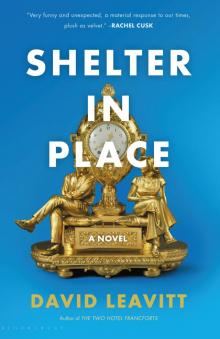 Shelter in Place
Shelter in Place The Man Who Knew Too Much: Alan Turing and the Invention of the Computer (Great Discoveries)
The Man Who Knew Too Much: Alan Turing and the Invention of the Computer (Great Discoveries) Family Dancing
Family Dancing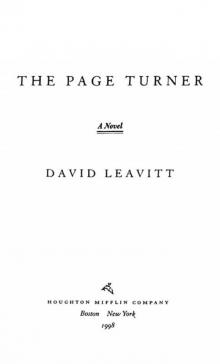 Page Turner Pa
Page Turner Pa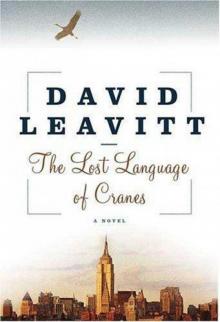 The Lost Language of Cranes: A Novel
The Lost Language of Cranes: A Novel The Body of Jonah Boyd
The Body of Jonah Boyd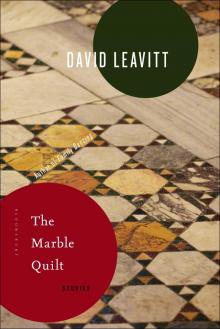 The Marble Quilt
The Marble Quilt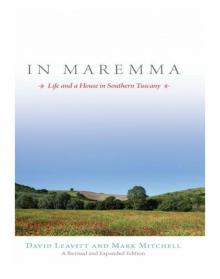 In Maremma
In Maremma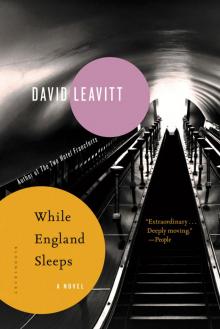 While England Sleeps
While England Sleeps A Place I've Never Been
A Place I've Never Been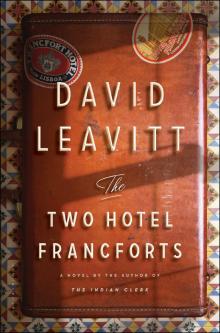 The Two Hotel Francforts
The Two Hotel Francforts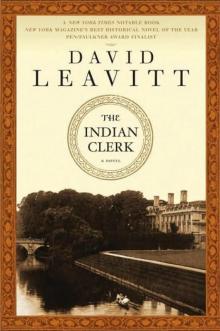 The Indian Clerk
The Indian Clerk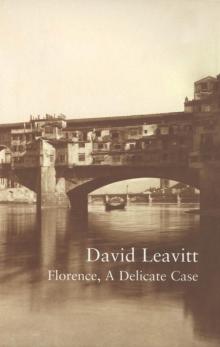 Florence
Florence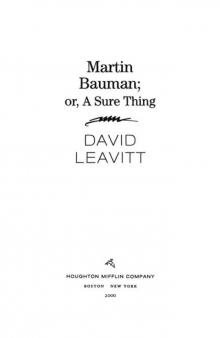 Martin Bauman
Martin Bauman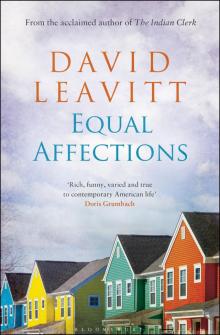 Equal Affections
Equal Affections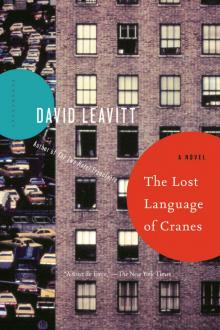 The Lost Language of Cranes
The Lost Language of Cranes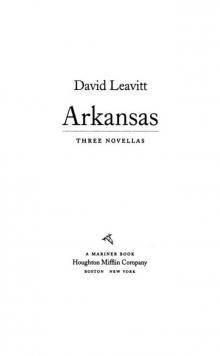 Arkansas
Arkansas